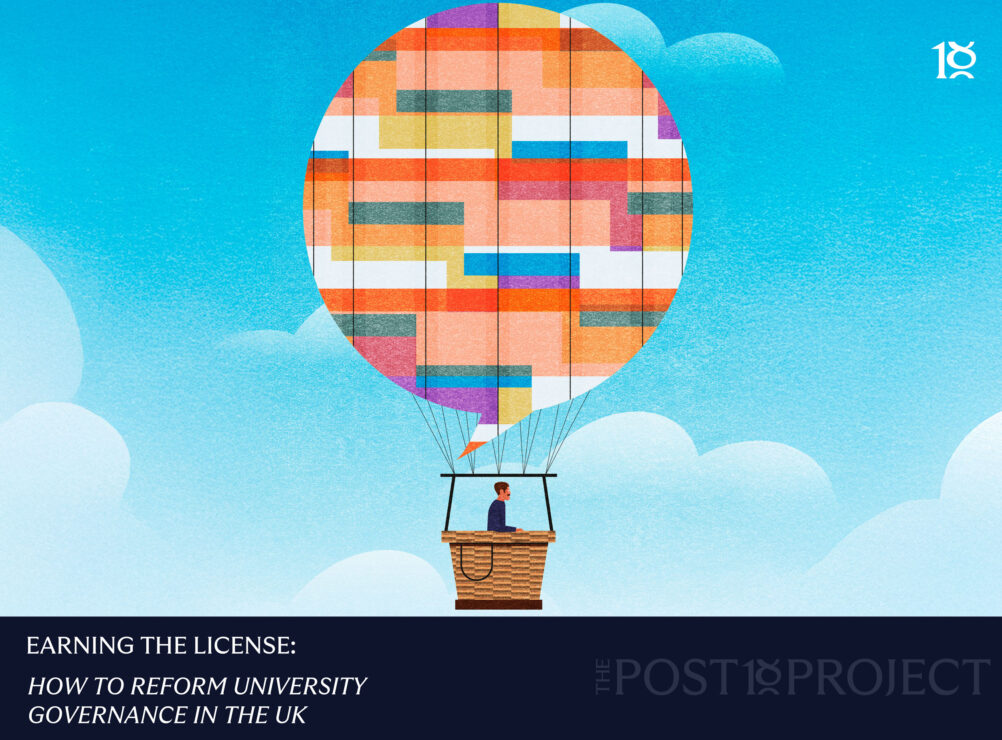The latest report from the King’s Policy Institute on freedom of speech and the culture wars – published just before the Jubilee break – is fascinating.
Over a third of the public tend towards feeling that people need to be more sensitive in how they talk to people from different backgrounds – up from a quarter at the end of 2020.
Men are 3.3 times more likely than women to believe people are too easily offended, while white people are 3.8 times more likely than those from a minority ethnic background to feel this way.
And as we might expect, leave voters and 2019 Conservative voters are also more likely than remain or Labour counterparts to think people take offence too readily.
None of that is especially surprising – although the shift since 2020 does raise interesting questions about whether we’re looking long-term at a cohort or period effect rather than an age effect.
But in the context of the culture wars as they apply to universities and impending legislation on the issue, I’m especially interested in any findings on the old Rawlsian see-saw between freedom to speak and freedom from harm.
Here, here in this world
As in previous studies, the freedom to express opinions without interference is generally seen by the public as more at risk than freedom from threats and abuse.
Just 14 percent of the UK public prioritise freedom from the expression of threatening or abusive opinions, compared with 38 percent who prioritise freedom to express opinions without interference.
But almost a third feel that both freedoms are currently equally threatened – and when you ask 16-24 year olds, the percentage prioritising the threat to freedom of expression falls to just 25 percent – with both freedoms equally threatened the top answer.
There are similar and predictable differences when comparing Conservative and Labour voters, and Leavers and Remainers.
It’s also worth remembering that not all issues are thought of in the same way. If we ask the public whether we should ban football supporters that boo players who “take the knee” from attending matches, 46 percent agree while 28 percent oppose.
Yet if we ask if organisers should be able to cancel a talk from an academic over that academic’s views towards trans women, the proportions pretty much switch – 25 percent agree and 44 percent oppose. Although again, when we look at the age differentials, that 25 percent rises sharply to 35 percent.
Where do we go, where can we turn?
To make more sense of all this, the researchers use a statistical technique called latent class analysis to combine information on people’s views on free speech and their level of support for actions that impinge on it to identify different groups within the population – each with distinct attitudes towards freedom of expression:
- Free speech fighters (12%) are most concerned about freedom of expression, with a very strong belief that people are too easily offended and that both private individuals and public figures should overwhelmingly be allowed to say what they want.
- Free speech-concerned (28%) are mostly concerned about freedom of expression over freedom from harm, with some worry about people being too easily offended.
- Sensitive non-interventionists (22%) are concerned about both freedom of expression and freedom from harm, with a strong belief that people should be more sensitive in the way they talk and that private individuals and public figures need to be careful to use language that isn’t threatening, abusive nor offensive.
- Sensitive interventionists (20%) share the concerns and beliefs of sensitive non-interventionists but diverge in also supporting a number of actions that impinge on free speech.
- Freedom-from-harm fighters (18%) are most concerned about freedom from harm and least concerned about freedom of expression, with a very strong belief that people should be more sensitive in the way they talk and that private individuals and public figures should be careful not to use threatening, abusive or offensive language.
What is remarkable, though, are the differences when it comes to gender and age. When it comes to 16-24 year olds, about a quarter are sensitive-interventionists and not far off a third are freedom-from-harm fighters, with just 16 percent free-speech-concerned. And when it comes to gender, men are about three times as likely as women to be free-speech-fighters, with women twice as likely as men to be freedom-from-harm fighters.
Whether you believe that views of 16-24s and women are an issue of nature that universities should respond to, or nurture that universities are somehow causing, is probably for another blog. What matters here is what it all might mean for a strategy concerned with universities “losing” the culture war.
Where, where do we stand
The argument that the sector is on the losing side of an ongoing culture war is summarised helpfully here by Diana Beech from London Higher. You know the score on the splits – whether we cut by leave v remain, old v young, conservative v labour, white v BAME or somewheres v anywheres, higher education seems to be on the wrong side of a war rather than straddling such divides for its support in the way that it used to, and probably should do.
Part of the resultant question is then whether you believe that the sector’s approach should be to try to win that war – with the casualties and collateral damage that approach causes – or find a pathway to peace and call it all off. I’ll admit to having considerable sympathy with a desire to call a ceasefire – I’m just not sure that the prescriptions that are suggested that would get us there will work.
Too often, it seems to be that the mooted solutions involve politely and carefully cleversplaining why the other side is wrong. Maybe we should invest in PR. Maybe we should talk more about what we do for society. Maybe, goes the argument, we should be more polite and constructive on social media.
But I have, I’m afraid, a terrible feeling that none of that will work. As a strategy to win the culture war, it’s weak. And as a way of getting either side to decommission its weapons, it feels hopelessly inadequate.
I do, though, have thoughts on a solution – and it involves shifting our focus from thinking about universities, to thinking about people.
Enough sun to make the whole world bright
It’s four years now since I wondered on here whether the student as “snowflake” frame as a pseudo-intellectual component of populism was being coordinated by its proponents – or just memetically transferred and adopted as people cast around to capture the anger of the oppressed without actually going as far as Trump.
What I didn’t realise at the time was just how dominant some of the Revolutionary Communist Party’s ideas would become. I still think, in the face of those frames, we can look isolated, smug and defensive. But I’m less clear on my solution from 2018 – the idea that all we needed was new frames – that were positive, crafted, and relentlessly promoted.
In an earlier part of my career, I would from time to time be the ultimate keyboard warrior – firing off passive aggressive missives that made me feel big and clever one minute, and then feeling full of guilt, regret and anxiety the next – something that would never have happened if I was spending more time with others. But amazingly, rather than the technology being adapted to mediate that kind of behaviour, over the years it appears to have intensified it throughout society. And there’s only one way to fix being isolated from others.
In other words, when Suella Braverman takes to the front page of the Times to declare that schools should not “pander” to trans pupils, it is true that my visceral reaction is to want her to lose. But even if Boris is toast and Starmer is heading for No.10, I also want her to understand.
I want to talk to her about the intersections between youth mental health, disability and gender dysphoria. I want her to spend time on and listen to the way in which the almost total collapse of CAMHS in this country has impacted our young people. I want her and her party and her ilk to be caused to listen to the thousands of student activists I’ve met over the years whose tactics they might find distasteful but whose desire for a better and fairer world can’t be faulted. I want her to meet my 11 year old, and to understand the deep harm she causes when she chats to a journo from the Times and lets that headline pop out in the way that it did.
To ease these troubled times
What that ultimately means for the sector is that as well as press releases on scientific breakthroughs and social attitudes and economic contribution, we need strategies that are less about us and more about us – less about universities, and more about students and staff.
It means telling their stories, explaining their views, convening their optimism and ambition for the world, defending their activism and celebrating their successes. It requires a focus on them and the future, rather than universities and their proud past. It behoves us to find students and staff to explain why cuts and or culture wars and carping about trigger warnings stop them from realising their ambitions. And it needs those on the front line of losing the war – those targeted by the Mail and vilified by GB News – to know that we’re behind them, and even that we think they might be able to create and foster a less divided world.
You might have seen that amusing poll from Public First a few weeks ago that put “university” as the fourth most popular choice when the public were asked which options would provide the best opportunities for young people – except when it came to their own kids. There’s something in that.
Call me a hopeless romantic if you want, but whenever I see the public beaming with pride at their grandkids, god kids or nieces and nephews’ graduation ceremonies, I’m almost always convinced that the cognitive dissonance involved in hating what universities do either disappears under the magic of understanding, or at the sudden shame involved in looking like they don’t.














A strange game. The only winning move is not to play.